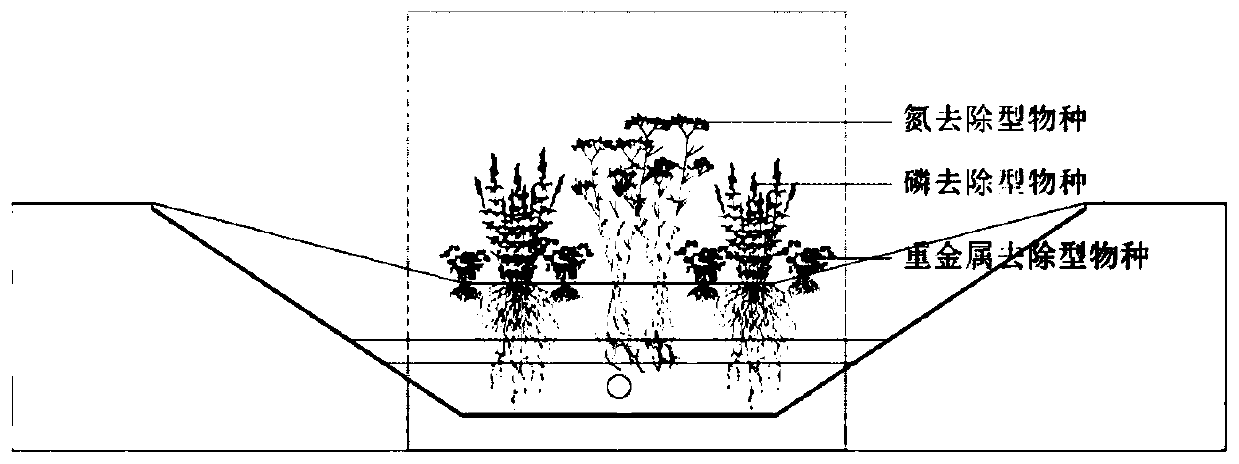Ground cover plant community construction method applicable to bioretention facility
A technology of bioretention and ground cover plants, applied in botany equipment and methods, plant cultivation, application, etc., can solve the problems of insufficient ecosystem service function, irrational structure of ground cover plant community, single function, etc. , to achieve the effect of guaranteeing the implementation effect, community stability guarantee, and simple implementation method
- Summary
- Abstract
- Description
- Claims
- Application Information
AI Technical Summary
Problems solved by technology
Method used
Image
Examples
Embodiment 1
[0054] Example 1 is located at the intersection of a main road and an auxiliary road in a residential area. The bioretention facility to which Example 1 belongs is a part of the green separation belt, with an area of about 80m 2 , and the sunshine habitat type is Sunshine (6h and above). The soil medium of the water storage area and the buffer zone of the bioretention facility is a medium soil formed by mixing primary soil, sandy soil and coir peat (the ratio is 4:4:2), and the soil medium in the edge area is primary soil. Example 1 The site mainly collects direct precipitation and rainwater runoff from the main road and auxiliary roads, and the pollution is relatively serious. The main pollutant types are: ammonium nitrogen compounds and phosphate compounds. Comprehensive assessment The bioretention facility to which Example 1 belongs belongs to the function-oriented type.
[0055] Water storage area 1 is planted with runoff pollution control-dominated ground cover plant c...
Embodiment 2
[0062] Example 2 is located near the main road of a certain city, and the bioretention facility to which Example 2 belongs is a part of the road green space, with an area of about 100m 2 , and the sunshine habitat type is Sunshine (6h and above). The soil medium of the water storage area and the buffer zone of the bioretention facility is a medium soil formed by mixing primary soil, sandy soil and coir peat (the ratio is 4:4:2), and the soil medium in the edge area is primary soil. The site in Example 2 mainly collects direct precipitation and rainwater runoff from surrounding road green spaces, with slight pollution. The bioretention facilities in Example 2 of the comprehensive assessment belong to the landscape-oriented type.
[0063] Planting landscape-dominated ground cover plant community in water storage area 1: Stipa fineleaf (40%) + Coreopsis (50%) + Pennisetum (20%) + Holly (10%);
[0064] Buffer zone 2 planting landscape-dominated ground cover plant community: sk...
PUM
 Login to View More
Login to View More Abstract
Description
Claims
Application Information
 Login to View More
Login to View More - R&D
- Intellectual Property
- Life Sciences
- Materials
- Tech Scout
- Unparalleled Data Quality
- Higher Quality Content
- 60% Fewer Hallucinations
Browse by: Latest US Patents, China's latest patents, Technical Efficacy Thesaurus, Application Domain, Technology Topic, Popular Technical Reports.
© 2025 PatSnap. All rights reserved.Legal|Privacy policy|Modern Slavery Act Transparency Statement|Sitemap|About US| Contact US: help@patsnap.com



